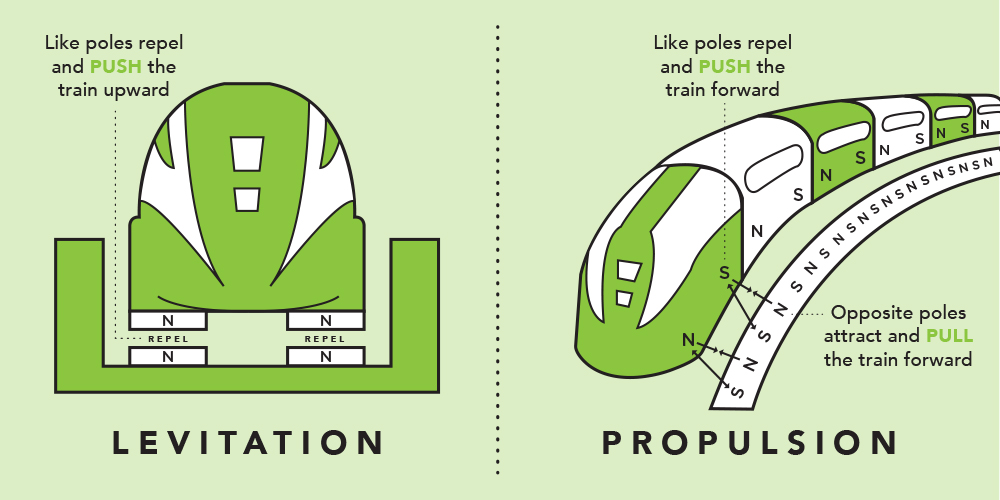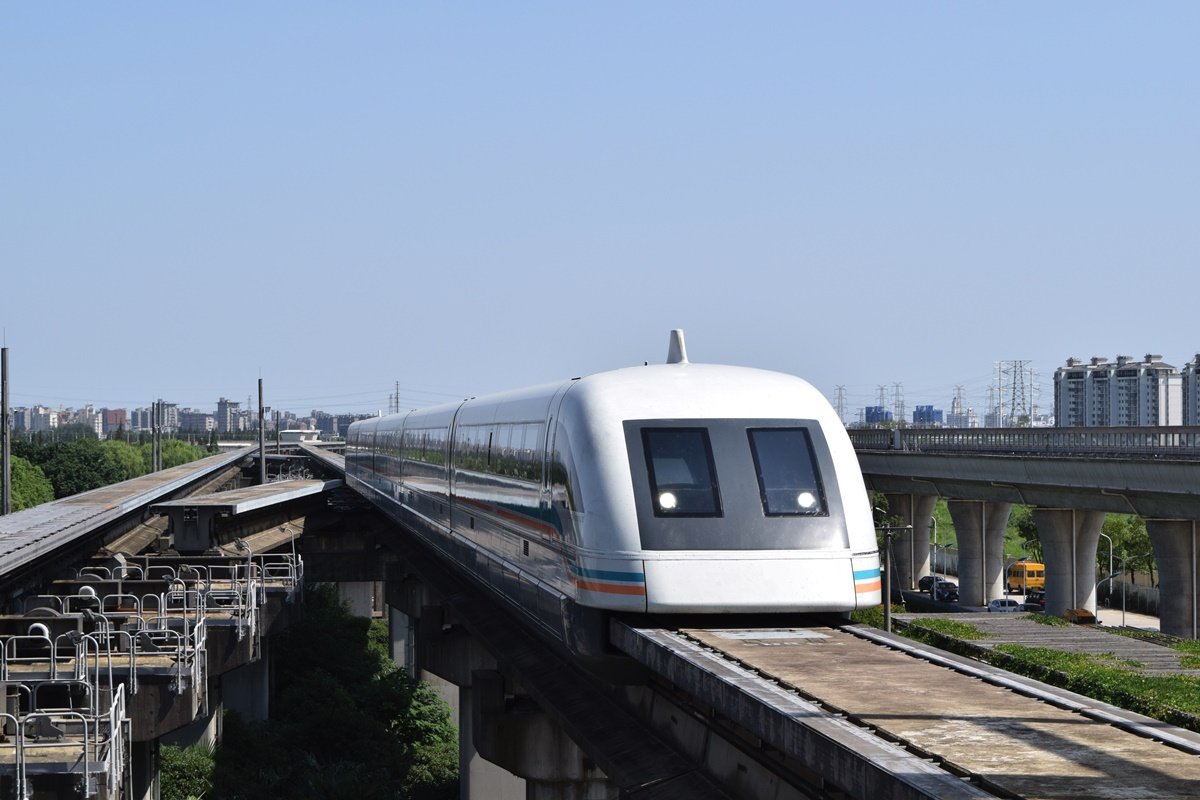Trains have evolved a lot over the years. Railway development, which can reach very high speeds and travel quickly and safely, has gained a new impetus for high-speed trains called Maglev.
Maglev is short for magnetic levitation and its name relates to trains floating on rails using the basic principles of magnets to replace old steel wheels.
It is true that the maglev train seems more of a futuristic invention, but this technology is already available in some parts of the world, with the potential to be faster, safer and more energy efficient than traditional rail.
History of Maglev
In the early 1960s, James Powell was on his way to Long Island, New York to see his girlfriend and got stuck in a five-hour traffic jam on the bridge connecting Queens to the Bronx. At the time, he thought there had to be a way to travel on land faster than conventional cars.
He worked with superconductors; these were mostly metal materials that lost much of their electrical resistance when cooled, allowing current to flow with almost no loss of energy. One property of superconductors is that in a near-zero resistance state, they can create electromagnetic fields strong enough to push objects as large as trains and keep them suspended in mid-air.
Powell was not the first to consider the idea of trains driven by magnetic forces. In 1904, professor and inventor Robert Goddard wrote a paper explaining the idea of magnetic levitation, and in 1910 the first patents for the technology were granted by Emile Bachelet.
The Shanghai Maglev train was the world’s first commercial Maglev line, opened in 2004. Germany and Japan also developed similar train technologies and tested their prototypes. There are currently six commercial Maglev lines and they are all located in South Korea, China and Japan.
How does the maglev train work?
The difference between a Maglev train and a conventional train is that a Maglev train has no engine – at least not the kind of engine used to pull typical wagons along ordinary steel tracks.
The basic principle behind the vehicle is the same as with electromagnetic drive: opposite poles attract and like poles repel. Electromagnets are similar to other magnets in that they attract metal objects, but the magnetic attraction is temporary.
 Getty Pictures
Getty PicturesOn the maglev track, the train practically rises above the tracks, this is because the magnetized coil running along the tracks repels the large magnets in the landing gear.
The trains are quieter than other trains as they do not touch the railway tracks and even when they reach 300 km/h the decibel levels are only 65 for people standing 50 meters from the train.
This also means that the passenger experiences less turbulence than on conventional trains, as the only source of friction is air.
Another big advantage of maglev trains is their safety as they are driven by an electric guide. Any two trains traveling on the same route cannot catch up or collide with each other due to the magnetic field of the tracks.
Maglev technology holds great promise for the future. It has the potential to be a cheaper, faster, sustainable and safer way than we currently have.
Source: Tec Mundo
I’m Blaine Morgan, an experienced journalist and writer with over 8 years of experience in the tech industry. My expertise lies in writing about technology news and trends, covering everything from cutting-edge gadgets to emerging software developments. I’ve written for several leading publications including Gadget Onus where I am an author.













